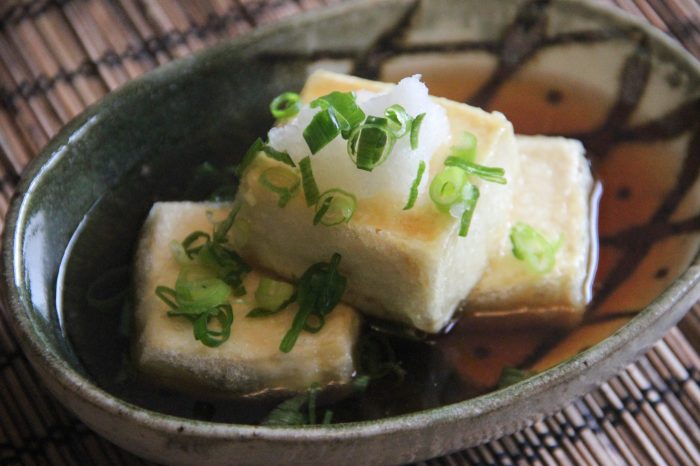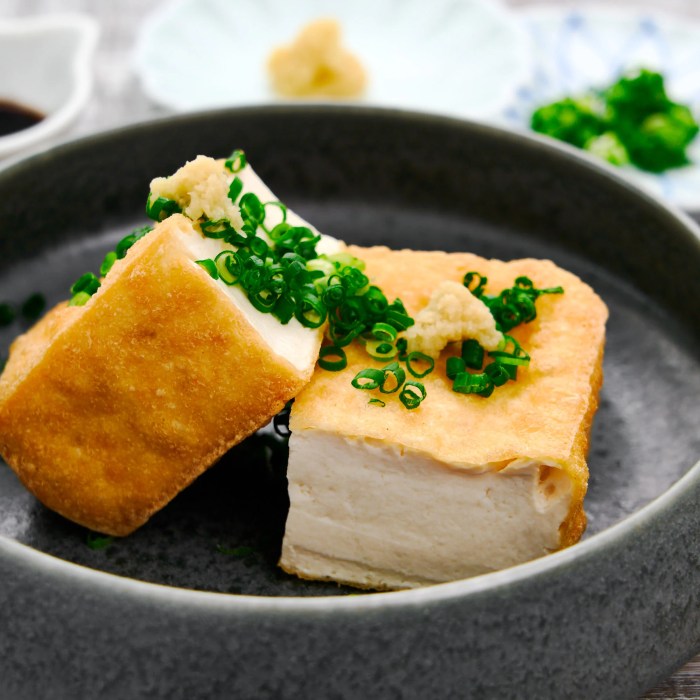Dear beloved brothers and sisters, this morning I want to talk to you about the wonderful art of cooking Japanese style tofu. Tofu, also known as bean curd, is a versatile and nutritious ingredient that can be used in a variety of dishes. Whether you are a seasoned chef or just starting out in the kitchen, learning how to cook Japanese style tofu can open up a world of delicious possibilities.
So let’s dive in and explore the tips, techniques, and recipes for making the most out of this amazing ingredient.
The Basics of Cooking Japanese Style Tofu: How To Cook Japanese Style Tofu
When it comes to cooking Japanese style tofu, the key is to start with high-quality tofu. Look for firm or extra firm tofu, as it will hold its shape better when cooking. Before using the tofu, it is important to press out any excess water. This can be done by wrapping the tofu in a clean kitchen towel and placing a heavy object on top for about 30 minutes.
This will help the tofu absorb flavors better and prevent it from becoming soggy during cooking.
Marinating and Seasoning
One of the best ways to infuse flavor into tofu is by marinating it. You can use a variety of ingredients such as soy sauce, ginger, garlic, and mirin to create a delicious marinade. Let the tofu marinate for at least 30 minutes to overnight for maximum flavor. Seasoning tofu with salt, pepper, and other spices can also enhance its taste and make it more enjoyable to eat.
Grilling and Pan-Frying
Grilling or pan-frying tofu can give it a crispy texture and delicious charred flavor. To grill tofu, simply brush it with oil and place it on a preheated grill for a few minutes on each side. For pan-frying, heat a small amount of oil in a pan and cook the tofu until golden brown on all sides. These methods are great for adding a crunchy exterior to your tofu dishes.
So, you want to make your truck window stand out, eh? Well, how about decorating it with some cool stickers? Check out this guide on how to decorate truck window with stickers and let your creativity flow!
Baking and Stir-Frying
Baking tofu is a healthier alternative to frying and can result in a chewy texture that pairs well with sauces and seasonings. Simply cube the tofu, toss it in your favorite sauce, and bake it in the oven until crispy. Stir-frying tofu with vegetables and noodles is another delicious way to enjoy this ingredient. The tofu absorbs the flavors of the sauce and vegetables, creating a satisfying and nutritious dish.
Conclusion
In conclusion, cooking Japanese style tofu is a rewarding experience that can lead to a wide range of delicious dishes. By following these tips and techniques, you can unlock the full potential of this versatile ingredient and impress your family and friends with your culinary skills. So don’t be afraid to experiment and get creative in the kitchen. With a little practice and patience, you can master the art of cooking Japanese style tofu and enjoy the amazing flavors it has to offer.
FAQs
1. Can I use silken tofu in Japanese cooking?
Yes, silken tofu can be used in Japanese cooking, but it is best suited for dishes like miso soup or tofu pudding where a soft texture is desired.
2. How long does tofu last in the fridge?

Tofu can last for up to a week in the fridge if stored properly in a sealed container with water that is changed daily.
So, you want to jazz up your truck window with some cool stickers, eh? Well, let me tell you, it’s all about finding the right balance, mate! You gotta mix and match different designs, sizes, and colors to make it pop! Check out this guide on how to decorate truck window with stickers for some pro tips!
3. Can I freeze tofu?

Yes, tofu can be frozen for up to three months. Freezing changes the texture, making it more chewy, so it is best used in dishes like stir-fries or stews.
4. Is tofu a good source of protein?, How to cook japanese style tofu
Yes, tofu is an excellent source of plant-based protein and is often used as a meat substitute in vegetarian and vegan diets.
5. Can I make my own tofu at home?
Yes, you can make your own tofu at home with just soybeans, water, and a coagulant like nigari or lemon juice. There are many recipes and tutorials available online to guide you through the process.
